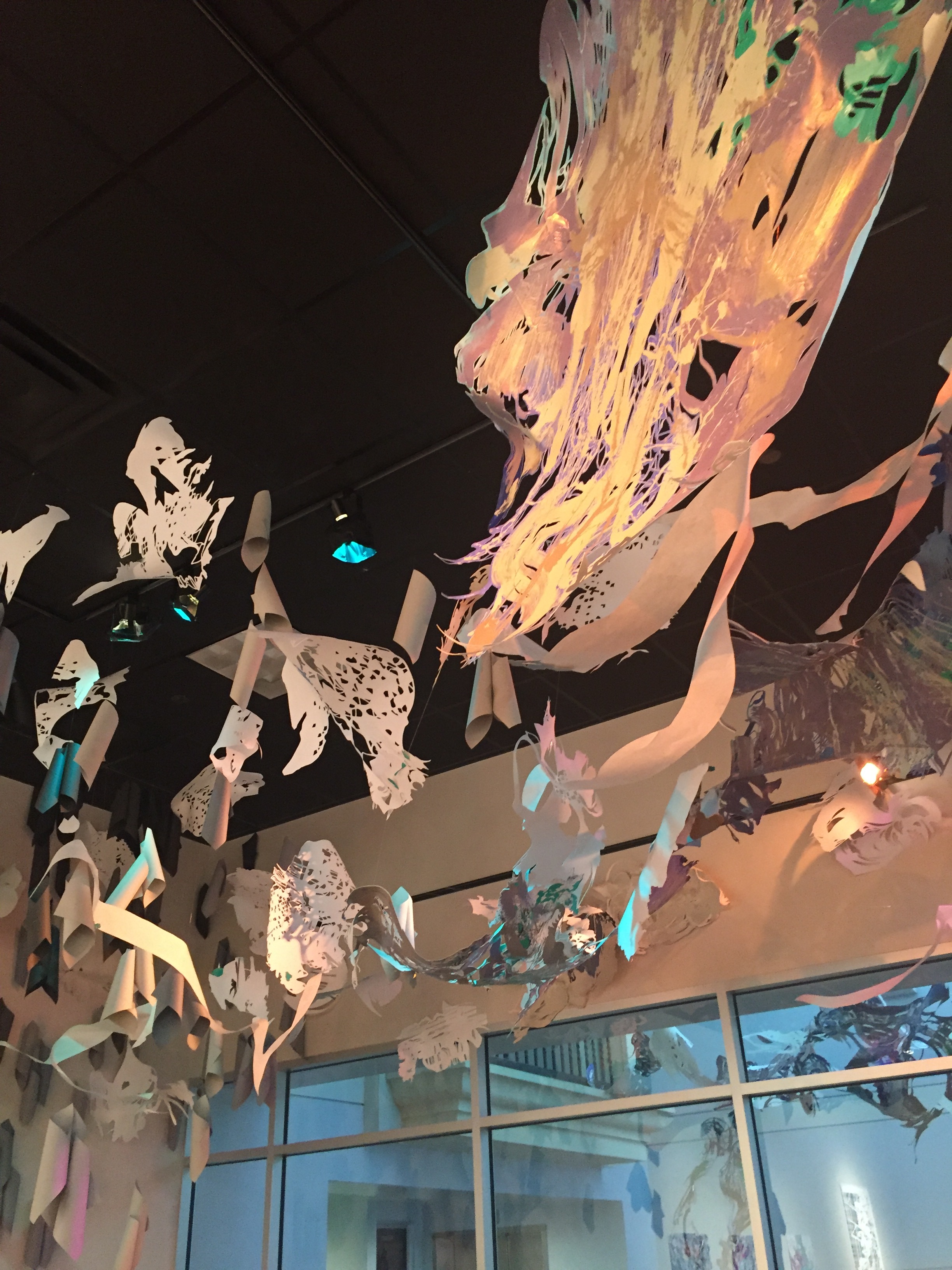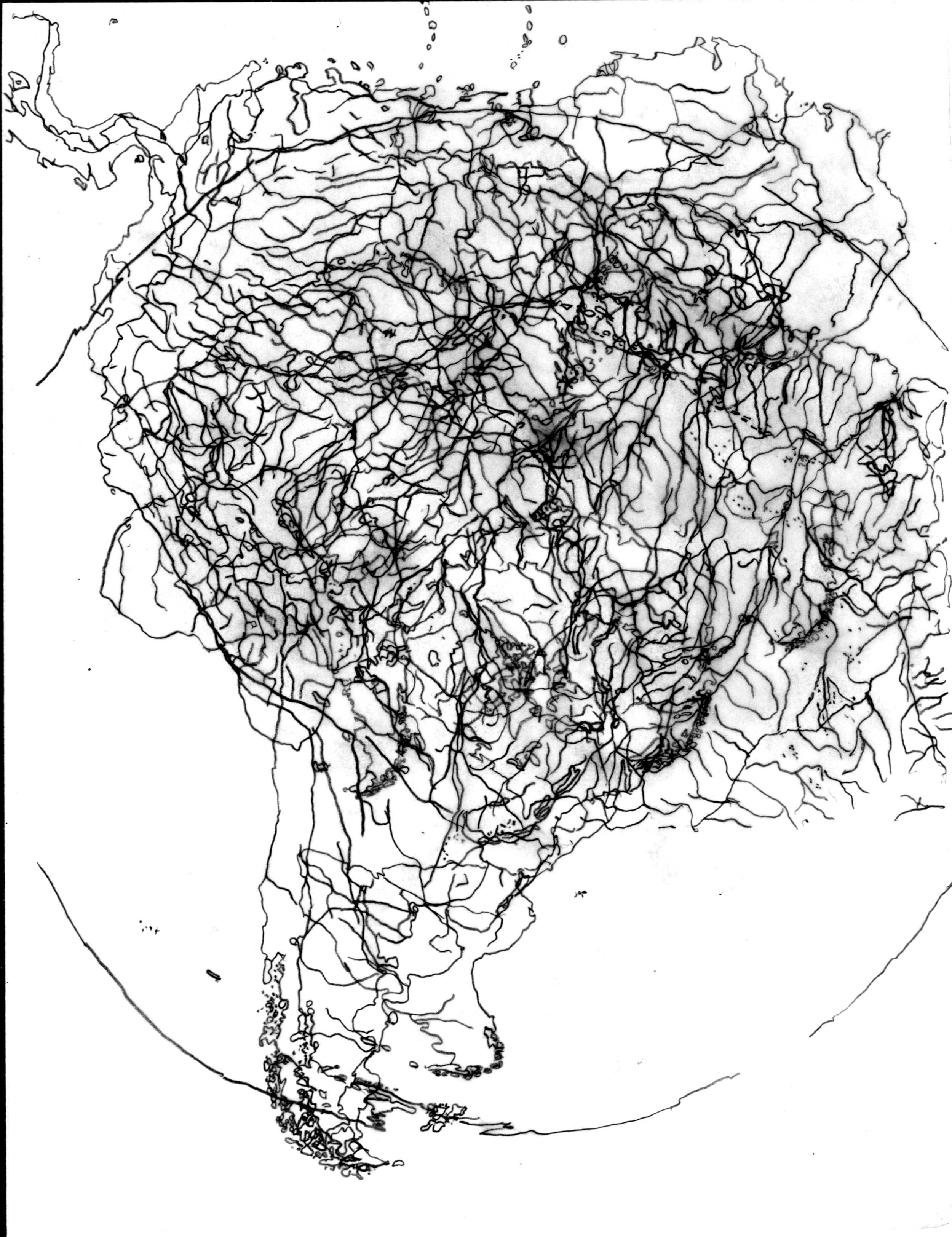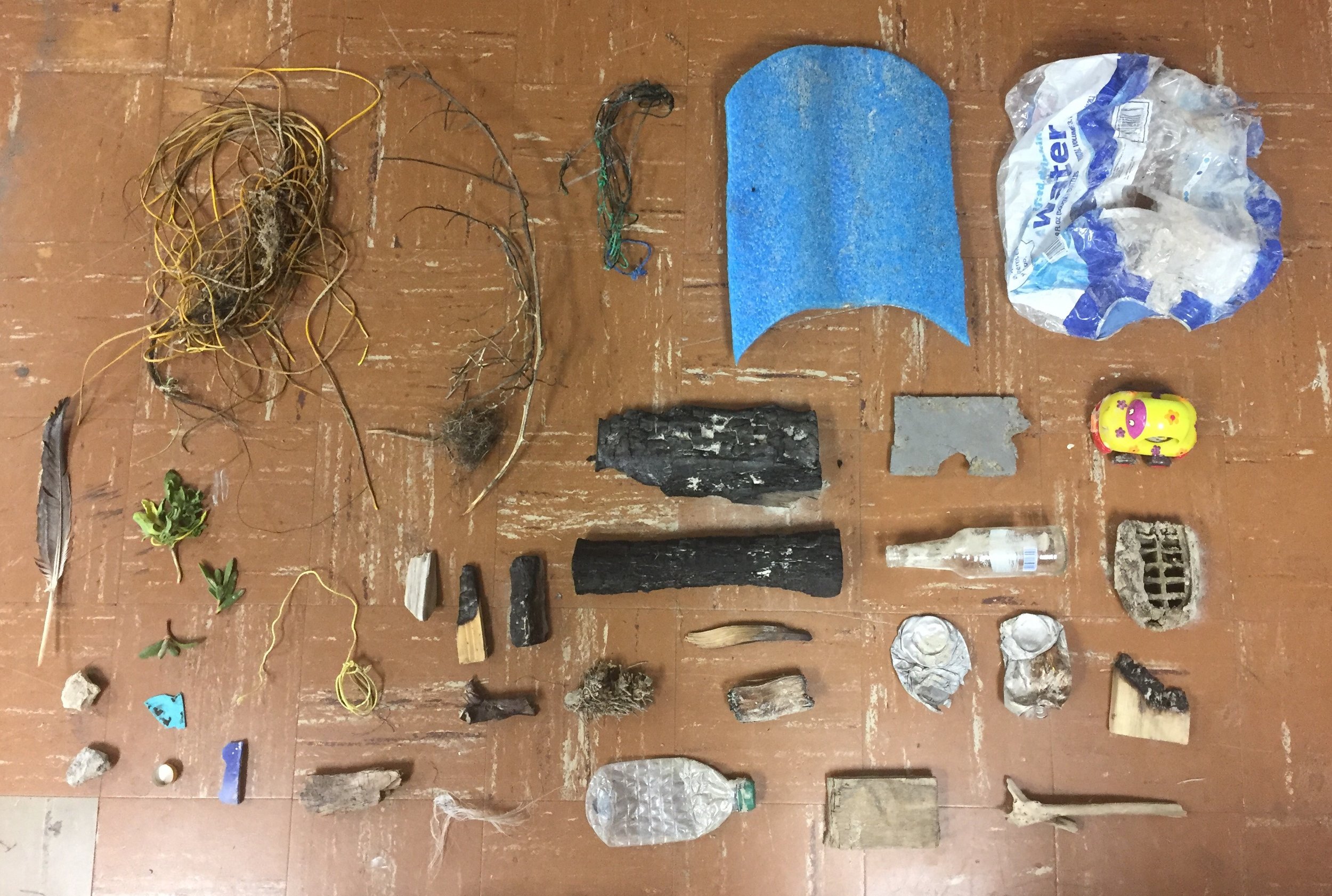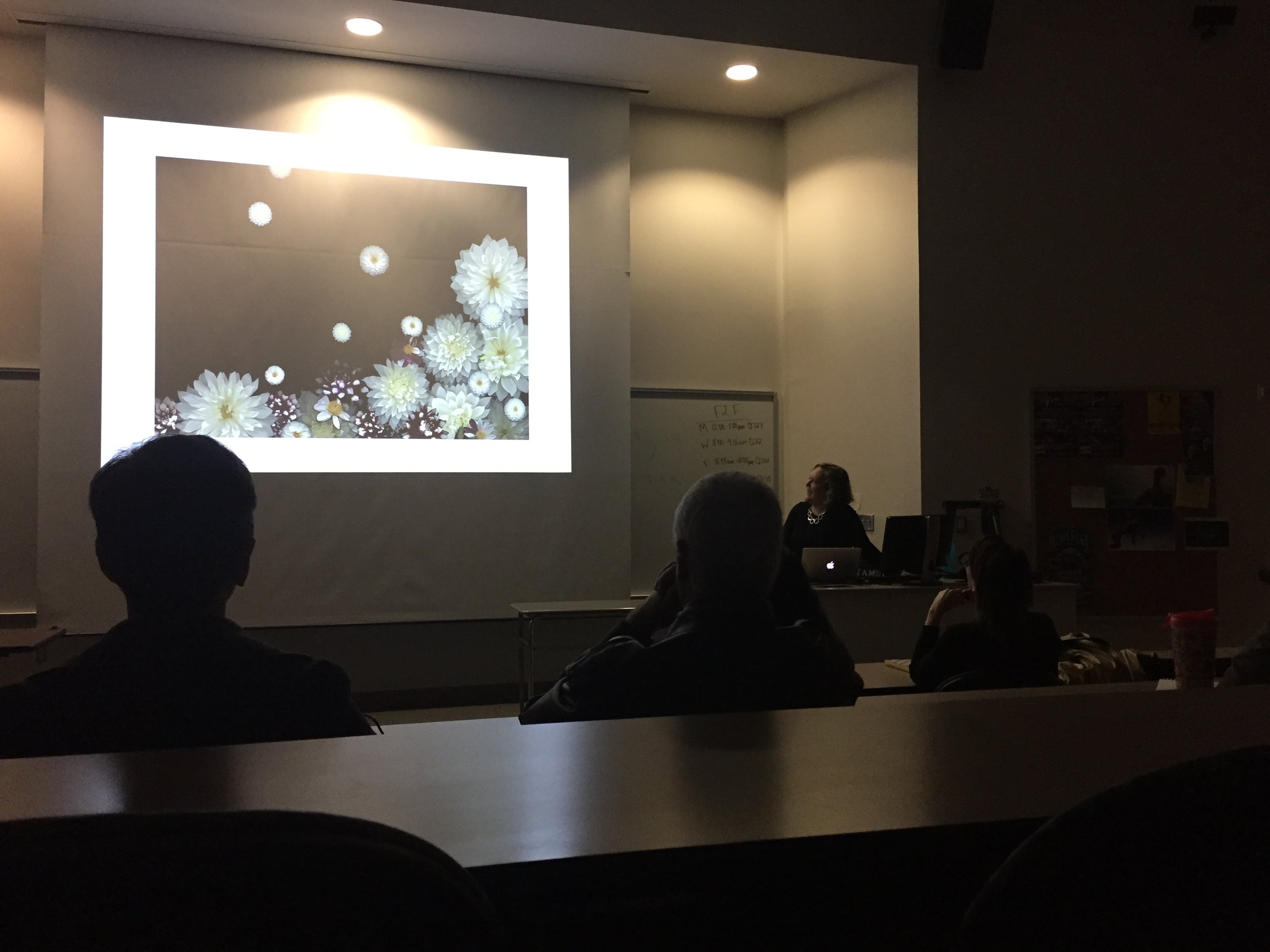So.... to be honest I was a little iffy about this trip to Vegas before we left. I'm not talking about the 21 hour drive there and back (plus a detour to the Grand Canyon, which was totally worth it), but really about the whole SGCI conference in general. The whole point of this conference is to be an convergence of printmakers, sharing ideas, techniques, and creating new connections with other printers across the globe. It still does all of these things, but with a bit of a cost.
I know I sound extremely negative in the beginning of this post, and I didn't really intend for it to sound this way, but I'm being honest about my initial thoughts. So I'll go through some aspects of the conference and kinda show the pros and cons of the whole situation.
First is the whole idea of Vegas. Who thought it was a good idea to have a conference in Vegas? Or that it was a good idea to take a bunch of undergrads to Vegas (I'm glad I didn't lose any of them!). One of the biggest issues I have with the conference is how expensive it is becoming, not just with conference fees, but paying for hotel and travel. Because the Vegas strip ain't cheap. The purpose is to bring these printers, educators, artists, and students together, but end up excluding a large majority of these people (especially students) because they can't afford the costs of the trip. I know that without grant and fund raised money, we would not have been able to go.
Enough of my nagging and I will get to the cool stuff:
DEMOS/PANELS/VENDORS
This is basically the meat and potatoes of the conference.
The vendor fair is always really cool, because its seems that everyone always comes together here just to socialize. And you get discounted or free loot!
While with some of the demonstrations and panels of the conference are been done before, its always interesting to see and learn. Mostly because printers are always looking to see how other people do things. Because sometimes you learn something new or just learn a new trick from someone else (or solidify that you are doing something a better way).
I went to visit three of the demonstrations. The first being a comparison of metal and wood engraving. While I'm not an engraver it is a type of art that I appreciate (and in awe of) very much. It was interesting to learn the differences of the two techniques and the histories behind them.
I also attended a demo of electro-etching, while this is not a new technique and is mostly used for commercial purposes, it was interesting to see. I had never seen this done before, and especially would not have considered it in a studio setting. Is it something I would do? No it is not, even if I did etching on the regular. Printers are always looking for ways to become more eco-friendly (which I'm totally for, even if I'm very much set in my ways). Conducting this process works to eliminate the need for corrosives, which is cool, but doesn't really work in the art making process. By becoming more eco-friendly, you end up losing the quality of mark making that makes etchings so beautiful.
The last demo I actually wasn't planning on going to see, but Hannah was interested in it so I decided to go give it a look see. What the artists was doing was printing collographs into clay tiles and firing them. While this doesn't seem so special, it was not something that I would have thought about. What was nice about this demo was not just the simplicity of it but it went though what could go wrong with the process and trouble shot any issues one may have from doing this technique.
What I really enjoy are the panels. While most people find these to be bland, I actually find them to be really informative. I've always have found myself to be interested in people's stories, and that exactly what we get out of these panels. The first I attend was about women being community leaders in print (as shown in the picture). The four women in the panel all come from different backgrounds and are leaders in four different types of print foundations, from a print shop, a non-profit foundation, a foundation for profit, and a community service center geared towards veterans. It was interesting to here their successes and their woes. One thing they all had in common was the need to stay financially alive. Which is a sad truth in their world. There is always a constant struggle to fight to stay alive. What I found touching was one of their shared successes and that is the success of the artists and prints that go to work with them. I believe this to be the same in academics as well.
One of the most important things I got out of this panel came as an answer to a student's question. The student had asked the panelists (who are all white), what they were doing to help women of color and those in the LGBQT+ communities. They help the at risk communities of their cities and work with trans and artists of color to further their artistic journey. They talked about working towards their needs, these women saw the lack of print shops in their own towns, the need for residencies that help artists who are also mothers, and the need to further educate, and have women as leaders in the boys club that is printmaking. AND THEY MADE IT HAPPEN. The majority of that room was white, so they stated that if we see that POC, especially women are not being represented, well then we have to change that.
TRADE PORTFOLIOS/OPEN PORTFOLIO SESSIONS
This is the fun part of SGCI. You could not go to any other part of the conference and just this and still feel that you got something out of it (which some people did). This is where the networking really happens, and you get to check out what other people are doing and share techniques and ideas.
What as nice for me to see what that other people are also working abstractly, something that you don't see very much in print. It has a tendency (and history) of being very graphic. But I've come to notice that techniques and art styles seem to come in waves, and that is okay. Or maybe it just has to do with who is teaching you. I'm still kind of thinking of the answer behind that.
But back to abstraction, I was able to get new ideas and see different styles. It made me consider how to handle my own work. I spent a lot of time speaking with Mark Bovey who is an associate professor at NSCAD University in Nova Scotia. He primarily works in washes and acrylic reversals in conjunction with charts and graphs. It was interesting to look at his work and see a way how to marry my love of washes with the map work I'm currently making. Will I do it the same way he is doing it? No most definitely not, but its something to think about. Above is the work by Kelsey Stephenson, from Alberta. I fell in love with her work. Maybe because at one point I wanted to make work like this, but at a much larger scale. It was really nice talking to her and hearing about her process and her ideas in art making.
What is most important about this is the networking. While my primary goal was to recruit new grads, and I did talk to a lot of really talented artists looking into graduate school (not just in print either!). But it is also important for everyone else to make connections as well. Which is one of the reason I'm really thankful for Ryan and Rich, because at any point I was walking around with them they would introduce me to all sorts of different people. And I tried to do the same for the undergrads that came with me. Pictured is Allie with my friend Liz. Liz is the intern for the shop I used to work at in Austin. They became fast friends while hanging out in the casino, but she is well connected with the print shops in Austin and has printed for some big name printers. I also made a connection with some former graduates of TAMUCC, especially with Steph Alaniz, who is a grad at WVU. I have been told by many that I needed to meet here, and when we finally did, we just clicked.
All in all, even with my initial qualms it was really good and productive trip. Leaving me inspired and ready to finish my first year of grad school and maybe start some new projects.















































